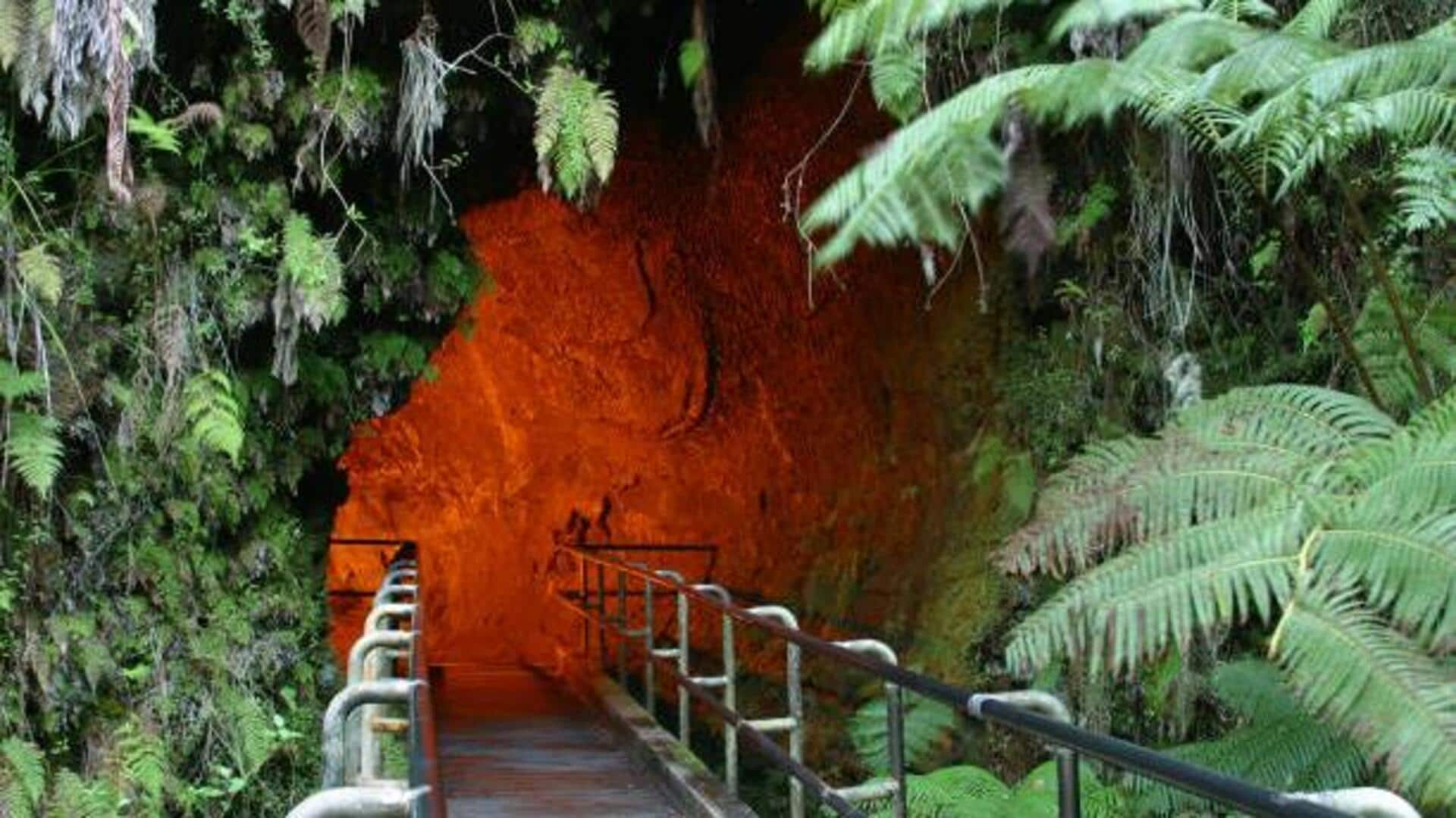
Why Hawaii's lava tubes are worth exploring
What's the story
Hawaii's landscapes are famous for their beauty and volcanic activity. Hidden among them are the lava tubes, natural tunnels formed by flowing lava.
These underground passages provide a unique adventure, giving visitors an opportunity to witness geological wonders and learn about the island's volcanic history.
Here's why these lava tubes are a must-visit for adventure seekers.
Formation
Understanding lava tube formation
Lava tubes are formed when the surface of a lava flow cools and hardens, as molten lava underneath continues to flow.
When the eruption is over, it leaves hollow tunnels behind.
These formations can be quite big, with some extending miles underground.
Exploring these tubes provides an insight into volcanic processes and demonstrates nature's capability to create intricate structures over time.
Locations
Popular lava tubes to explore
Hawaii is home to some of the most incredible lava tubes that are open to exploration. These include Thurston Lava Tube in Hawaii Volcanoes National Park and Kaumana Caves on the Big Island.
Each of these places has its own unique characteristics, from the verdant vegetation at their entrances to the amazing rock formations inside.
Visitors should check their accessibility and safety guidelines before visiting.
Precautions
Safety tips for trekking
Trekking through lava tubes has to be done with preparation and caution because of the uneven terrain and potential hazards like low ceilings or slippery surfaces.
It's best to wear sturdy footwear, carry a flashlight or headlamp, and travel with a guide if you're not familiar with the area.
Always respect posted signs and stay on designated paths to ensure safety during your adventure.
Conservation
Environmental considerations
While exploring Hawaii's delicate ecosystems such as lava tubes, it's essential to preserve its natural beauty.
Visitors must follow Leave No Trace principles by minimizing impact on surroundings, not littering or disturbing wildlife habitats inside the caves or in nearby areas outside them.
They must also respect cultural sites that may lie along trails leading towards entrances of these remarkable geological formations.